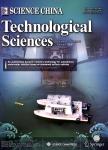Effect of radial heat conduction on effective thermal conductivity of carbon nanotube bundles
Effect of radial heat conduction on effective thermal conductivity of carbon nanotube bundles作者机构:Jiangsu Key Laboratory for Design and Manufacture of Micro-Nano Biomedical Instruments Southeast University College of Electronic and Mechanical Engineering Nanjing Forestry University Key Laboratory of Hydraulic Machinery Transients (Wuhan University) Ministry of Education
出 版 物:《Science China(Technological Sciences)》 (中国科学(技术科学英文版))
年 卷 期:2018年第61卷第12期
页 面:1959-1966页
核心收录:
基 金:supported by National Natural Science Foundation of China(Grant Nos.51476033,51376094) the Key Laboratory of Hydraulic Machinery Transients(Wuhan University)of Ministry of Education the Tianjin Key Laboratory of Advanced Functional Porous Materials
主 题:axial thermal conductivity carbon nanotube bundle inter-tube thermal resistance radial heat flow
摘 要:The effect of the radial heat conduction on the effective thermal conductivity of carbon nanotube(CNT) bundles is studied by the nonequilibrium molecular dynamics(NEMD) method. The hexagonal CNT bundle consists of seven(10, 10) single-walled carbon nanotubes(SWCNTs). The radial heat conduction is induced by creating the vacancy defects in some segments of the constituent CNTs. Combined with the temperature differences and the inter-tube thermal resistances at the different segments,the radial heat flow in the CNT bundle is calculated. The maximum percentage of the radial heat flow is less than 7% with the presence of four defective CNTs, while the resultant decrement of the effective thermal conductivity of the bundle is about 18%.The present results indicate that the radial heat flow can significantly diminish the axial heat conduction in the CNT bundles,which probably explains the smaller effective thermal conductivity in the CNT assemblies compared to that of the individual CNTs.




